Intuitive Colorimetry, Visual Stress and Pattern Glare
What is Intuitive Colorimetry?
Intuitive Colorimetry is a diagnostic assessment used to determine the unique precise colour hue and saturation of a coloured tint, which will help relieve an individual’s symptoms of visual stress. These customised coloured lenses often benefit patients with migraines, epilepsy, multiple sclerosis and children and adults with reading difficulties.
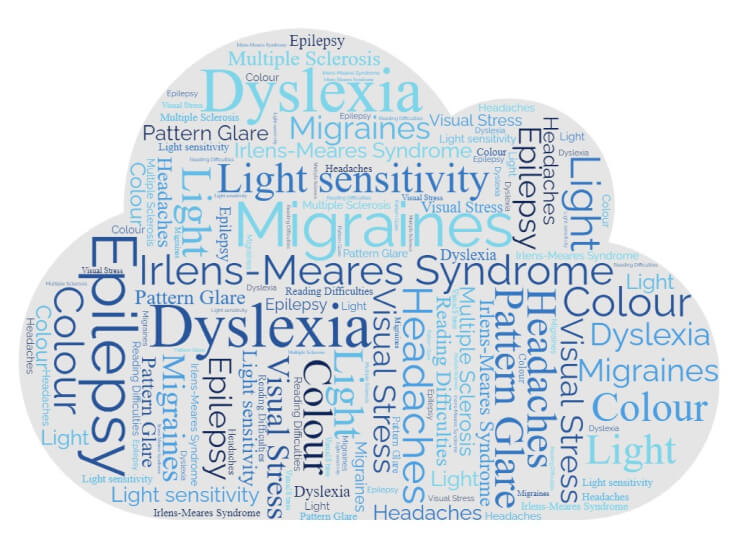
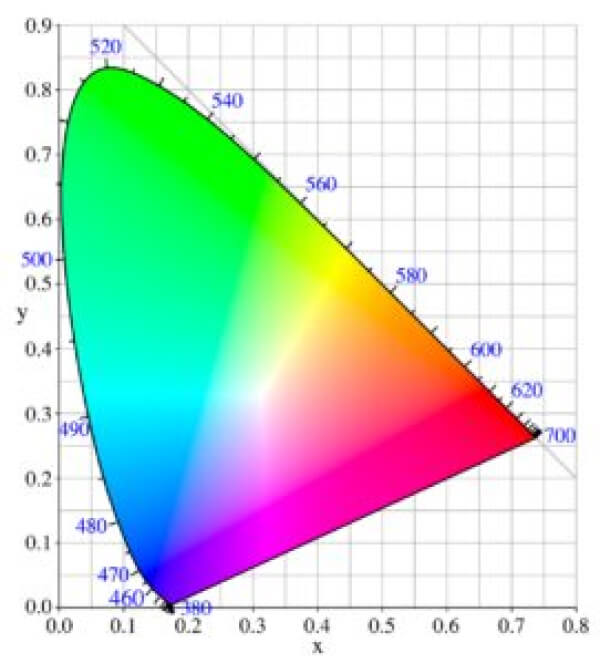
The Wilkins Intuitive Colorimeter
Understanding the Commission Internationale de L’Eclairage (CIE, the International Commission on Illumination) CIE 1931 Colour Space, (A graphical representation of all colours seen by humans transformed to a two dimensional, horseshoe-shaped graph of the brightness and colour values) and combining this with research under the auspices of the British Medical Research Council enables the Wilkins Intuitive Colorimeter to be designed with analogous colours sequenced close together and complimentary colours set 180 degrees opposite.
Using a bracketing technique we can guide our patients to refine their colour preference by both hue and saturation enabling customisation for to each patient.
A specialised computer program translates the determined spectral colour filter to match one or a selection of up to 6 combined trial colour filters. These are trialled while saturation levels re adjusted to find an optimal level of comfort with the lowest saturation.
We are one of only a few practices in Queensland that have access to this equipment, and the only practice in Mackay.
Optimally tinted lenses help with symptoms of dyslexia, Irlen-Meares Syndrome, migraines, light sensitivity, and photosensitive epilepsy. A spectral colour filter makes reading more comfortable and provides relief under fluorescent lighting and when looking at repeated patterns. The testing is subjective: If an adult patient prefers a colour and notices significant change, we dispense coloured glasses. For children we assess their speed of reading both with and without the coloured filter or overlay, to determine the effectiveness of the tint. Glasses with specifically selected coloured filters are more efficient than overlays on text or changing coloured backgrounds on computer screens.
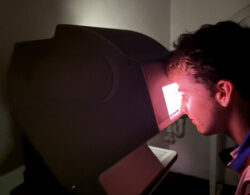

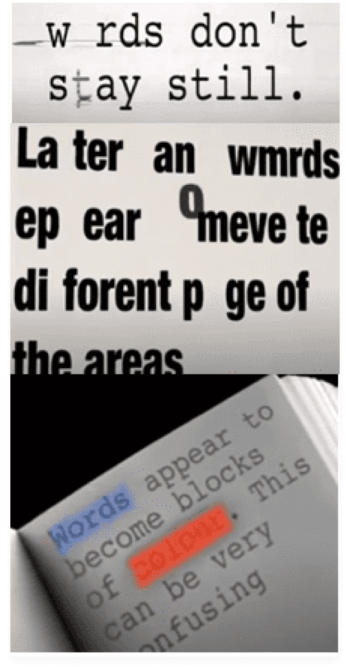
What is Visual Stress?
Visual Stress also known as Irlen-Meares Syndrome is sensitivity to visual patterns, particularly stripes. Repeated patterns in carpet, other floorings or print on a page or screen can cause a visual perceptual problem which can induce discomfort, occasionally headaches and can create coloured blur and movement of text when reading. Perceptual problems are due to a hyper-activation of the visual cortex of the brain. This hyper-activation is reduced when a tailored to the individual colour filter is used.
Symptoms of Visual Stress.
- Movement of the printed text
- Blurring of print
- Letters changing shape
- Patterns in the print (sometimes described as rivers or worms)
- Halos of colour surrounding letters or words
- Tiring easily whilst reading
- Headaches or visual discomfort
- Red, sore, watery eyes.
Signs of Visual Stress
- Moves closer to or further away from the book
- Moves book around on the desk
- Fidgets continuously
- Using finger as a marker on the page
- Skips words or lines
- Frequently re-reads the same line
- Rubs eyes or blink frequently when reading
- Poor comprehension of reading content
- Frustration and low self-esteem
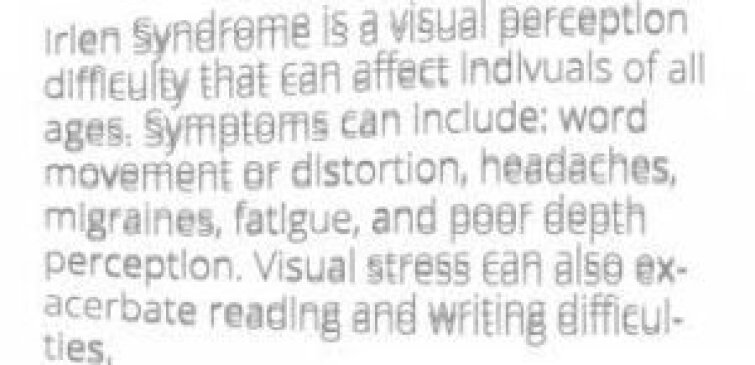
These symptoms and signs can be relieved with the use of coloured lenses and vision therapy exercises. Creating an environment with constant, evenly distributed light also helps whether this be by introducing blinds or shades over windows or removing harsh light sources like fluorescent lighting.
Pattern Glare
Our optometrists determine your need for a colourimetry assessment by listening to your case history and assessing your reaction to a pattern glare target. Pattern glare targets are a series of striped patterns, which can either appear normal or cause vision stress. In some cases patients can’t stand to look at them and often turn away; others see colours and shapes especially if the target is moved up and down. This indicates visual discomfort due to pattern glare. Similarly, when we read from a book, the text is displayed in a series of lines; the pattern glare test mimics this.
In our practice both Ms Liz, our Vision Therapy Assistant and Shania our Clinical Assistant have benefitted from customised spectral filters. They wear their colours with pride throughout the day especially when they are writing reports and using the computer for long periods of time.

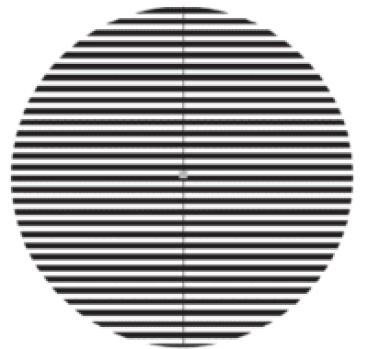

Our Services / Intuitive Colourimetery